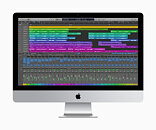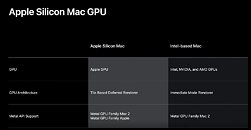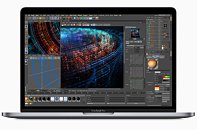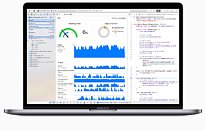Apr 10th, 2025 04:51 EDT
change timezone
Latest GPU Drivers
New Forum Posts
- random system shutdown with fans running at full speed (16)
- RX 9000 series GPU Owners Club (275)
- Shadow of the Tomb Raider benchmark (555)
- Do you use Linux? (573)
- [Update] FanControl (and other different monitoring software) blocked by Defender due to Winring0 vulnerability (2)
- Help with updating firmware on a AOC Agon Pro OLED monitor, says I need Install Tool (3)
- HP EliteDesk 800 G2 SFF CPU support (2)
- Anyone know where to get driver updates / backdates for TUF A15? (4)
- EK Quantum Velocity intel to amd conversion (13)
- How is the Gainward Phoenix Model in terms of quality? (0)
Popular Reviews
- The Last Of Us Part 2 Performance Benchmark Review - 30 GPUs Compared
- ASRock Z890 Taichi OCF Review
- MCHOSE L7 Pro Review
- Sapphire Radeon RX 9070 XT Pulse Review
- PowerColor Radeon RX 9070 Hellhound Review
- Upcoming Hardware Launches 2025 (Updated Apr 2025)
- Sapphire Radeon RX 9070 XT Nitro+ Review - Beating NVIDIA
- Acer Predator GM9000 2 TB Review
- ASUS GeForce RTX 5080 Astral OC Review
- UPERFECT UStation Delta Max Review - Two Screens In One
Controversial News Posts
- NVIDIA GeForce RTX 5060 Ti 16 GB SKU Likely Launching at $499, According to Supply Chain Leak (174)
- MSI Doesn't Plan Radeon RX 9000 Series GPUs, Skips AMD RDNA 4 Generation Entirely (146)
- Microsoft Introduces Copilot for Gaming (124)
- AMD Radeon RX 9070 XT Reportedly Outperforms RTX 5080 Through Undervolting (119)
- NVIDIA Reportedly Prepares GeForce RTX 5060 and RTX 5060 Ti Unveil Tomorrow (115)
- Over 200,000 Sold Radeon RX 9070 and RX 9070 XT GPUs? AMD Says No Number was Given (100)
- Nintendo Switch 2 Launches June 5 at $449.99 with New Hardware and Games (99)
- Nintendo Confirms That Switch 2 Joy-Cons Will Not Utilize Hall Effect Stick Technology (99)
News Posts matching #iMac
Return to Keyword BrowsingCD Projekt Red Announces Cyberpunk 2077: Ultimate Edition Is Coming to Mac
CD PROJEKT RED today announced Cyberpunk 2077: Ultimate Edition will be arriving natively on Macs with Apple silicon, including the new iMac, Mac mini, and MacBook Pro, powered by the M4 family of chips. The game is optimized to take full advantage of Apple silicon and Metal to bring the immersive world of Night City - and the deadly district of Dogtown - to Mac gamers for the very first time.
The game will include advanced features like path tracing, frame generation, and built-in Spatial Audio for even more immersive gameplay and stunning visuals. Coming to Mac early next year, it will be available to purchase via both the Mac App Store and Steam, and existing Steam PC purchases will carry over to the Mac. More details and a release date for early next year will be announced at a later time.
The game will include advanced features like path tracing, frame generation, and built-in Spatial Audio for even more immersive gameplay and stunning visuals. Coming to Mac early next year, it will be available to purchase via both the Mac App Store and Steam, and existing Steam PC purchases will carry over to the Mac. More details and a release date for early next year will be announced at a later time.

Apple Unveils the New iMac With M4 and Thunderbolt 4 Connectivity
Apple today announced the new iMac, featuring the powerful M4 chip and Apple Intelligence, in its stunning, ultra-thin design. With M4, iMac is up to 1.7x faster for daily productivity, and up to 2.1x faster for demanding workflows like photo editing and gaming, compared to iMac with M1. With the Neural Engine in M4, iMac is the world's best all-in-one for AI and is built for Apple Intelligence, the personal intelligence system that transforms how users work, communicate, and express themselves, while protecting their privacy. The new iMac is available in an array of beautiful new colors, and the 24-inch 4.5K Retina display offers a new nano-texture glass option. iMac features a new 12MP Center Stage camera with Desk View, up to four Thunderbolt 4 ports, and color-matched accessories that include USB-C. Starting at just $1,299, now with 16 GB of unified memory, the new iMac is available to pre-order today, with availability beginning Friday, November 8.
"iMac is beloved by millions of users, from families at home to entrepreneurs hard at work. With the incredible features of Apple Intelligence and the powerful performance of Apple silicon, the new iMac changes the game once again," said John Ternus, Apple's senior vice president of Hardware Engineering. "With M4 and Apple Intelligence, gorgeous new colors that pop in any space, an advanced 12MP Center Stage camera, and a new nano-texture glass display option, it's a whole new era for iMac."
"iMac is beloved by millions of users, from families at home to entrepreneurs hard at work. With the incredible features of Apple Intelligence and the powerful performance of Apple silicon, the new iMac changes the game once again," said John Ternus, Apple's senior vice president of Hardware Engineering. "With M4 and Apple Intelligence, gorgeous new colors that pop in any space, an advanced 12MP Center Stage camera, and a new nano-texture glass display option, it's a whole new era for iMac."

Apple Supercharges 24-inch iMac with New M3 Chip
Apple today unveiled the new 24-inch iMac featuring the amazing M3 chip, making the world's best all-in-one even more powerful and more capable. Thanks to the efficiency of Apple silicon, the new iMac delivers a huge leap in performance in its remarkably thin design and spectrum of seven vibrant colors that users love. iMac with M3 is up to 2x faster than the prior generation with M1.1 And for those upgrading from an Intel-based iMac, the new iMac is up to 2.5x faster than the most popular 27-inch models, and 4x faster than the most powerful 21.5-inch model. It also features an expansive 4.5K Retina display with 11.3 million pixels and over a billion colors, faster wireless connectivity, and a seamless experience with iPhone. Combined with its best-in-class camera, speakers, and mics, along with macOS Sonoma, iMac with M3 is better than ever—perfect for everyone, from families to small businesses, aspiring creatives, students, and gamers. Customers can order the new iMac starting today, with availability beginning Tuesday, November 7.
"We're excited to give iMac a big boost in performance with the M3 chip," said John Ternus, Apple's senior vice president of Hardware Engineering. "Millions of users absolutely love iMac for its stunning design and expansive 24-inch, 4.5K Retina display that's the perfect size to spread out with all their favorite apps and get things done. And now M3 brings even more speed to everything users do, whether multitasking, creating captivating images and videos, working on a business plan, or playing their favorite games. The new iMac with M3 is incredible for anyone, especially those who haven't yet upgraded from Intel, providing a giant leap in performance and capabilities only possible with Apple silicon."
"We're excited to give iMac a big boost in performance with the M3 chip," said John Ternus, Apple's senior vice president of Hardware Engineering. "Millions of users absolutely love iMac for its stunning design and expansive 24-inch, 4.5K Retina display that's the perfect size to spread out with all their favorite apps and get things done. And now M3 brings even more speed to everything users do, whether multitasking, creating captivating images and videos, working on a business plan, or playing their favorite games. The new iMac with M3 is incredible for anyone, especially those who haven't yet upgraded from Intel, providing a giant leap in performance and capabilities only possible with Apple silicon."

Apple Introduces new Mac mini with M2 Processors
Apple today unveiled the new Mac mini, supercharged by M2 and the all-new M2 Pro. With the M2 chip, Mac mini is even more powerful, capable, and affordable with a new starting price of just $599. The new M2 Pro chip delivers pro-level performance to Mac mini for the first time, enabling users to run high-performance workflows that were previously unimaginable in such a compact design. Mac mini with M2 and M2 Pro delivers faster performance, even more unified memory, and advanced connectivity, including support for up to two displays on the M2 model, and up to three displays on the M2 Pro model. Paired with Studio Display and Magic accessories, along with the power and ease of macOS Ventura, Mac mini provides a phenomenal desktop experience that will take users' productivity and creativity to the next level. Customers can order the new Mac mini models today, with availability beginning Tuesday, January 24.
"With incredible capabilities and a wide array of connectivity in its compact design, Mac mini is used in so many places, in so many different ways. Today, we're excited to take it even further with M2 and M2 Pro," said Greg Joswiak, Apple's senior vice president of Worldwide Marketing. "Bringing even more performance and a lower starting price, Mac mini with M2 is a tremendous value. And for users who need powerful pro performance, Mac mini with M2 Pro is unlike any other desktop in its class."
"With incredible capabilities and a wide array of connectivity in its compact design, Mac mini is used in so many places, in so many different ways. Today, we're excited to take it even further with M2 and M2 Pro," said Greg Joswiak, Apple's senior vice president of Worldwide Marketing. "Bringing even more performance and a lower starting price, Mac mini with M2 is a tremendous value. And for users who need powerful pro performance, Mac mini with M2 Pro is unlike any other desktop in its class."
Belkin Rolls Out 5-in-1 and 6-in-1 USB-C Multiport Hubs
Belkin, a global consumer electronics leader, today introduces two new multiport solutions, adding to its impressive connectivity category. The CONNECT USB-C 5-in-1 adapter and CONNECT 6-in-1 hub make it easy to share content between devices, connect multiple components for enhanced productivity, and connect people safely and securely to the things they love. Both products are available to order now.
Designed with the growing number of Chromebook users in mind, the multiport adapter offers robust capabilities with a simple design, allowing for data, video, Ethernet and power all to pass through a single cable connection. This docking station is WWCB certified, featuring Chromebook optimized features and providing automatic firmware updates directly through Chrome OS for an enhanced connectivity experience. Additionally, the adapter provides Power Delivery up to 86 W to charge connected devices, ensuring a more reliable and fast charge.
Designed with the growing number of Chromebook users in mind, the multiport adapter offers robust capabilities with a simple design, allowing for data, video, Ethernet and power all to pass through a single cable connection. This docking station is WWCB certified, featuring Chromebook optimized features and providing automatic firmware updates directly through Chrome OS for an enhanced connectivity experience. Additionally, the adapter provides Power Delivery up to 86 W to charge connected devices, ensuring a more reliable and fast charge.

Apple Rumoured to Launch 27-inch iMac, Compact Mac Pro
When Apple launched its first M1 iMac, it was to mixed reviews, partially due to the new design, but also due to the fact that it only came with a 24-inch display option. Now rumours of a new 27-inch iMac have surfaced and it might launch as soon as on the 8th of March, when Apple is due to hold its first event of the year. However, if the rumours are true, a lot of Apple fans are going to be disappointed once more, as the 27-inch model is said to only come in a single Pro SKU. The 27-inch iMac is expected to potentially have multiple CPU options though, as it might be offered with the M1 Pro and M1 Max chips.
The Bloomberg story also talks about a "half-sized Mac Pro" based on either of the high-end M1 chips as well. In this case there isn't much in terms of details to go on, but the author expects it to land at WWDC in June, although shipments are expected in the autumn. Other speculation include the typical kind of transitions you'd expect, like current products moving to Apple's M2 silicon towards the end of the year. That said, a 13-inch MacBook Pro might be on the books, as a cheaper or lighter alternative to the current 14 and 16-inch models. The event in March is also expected to bring a new iPhone SE and iPad Air to market, with as yet unknown specs.
The Bloomberg story also talks about a "half-sized Mac Pro" based on either of the high-end M1 chips as well. In this case there isn't much in terms of details to go on, but the author expects it to land at WWDC in June, although shipments are expected in the autumn. Other speculation include the typical kind of transitions you'd expect, like current products moving to Apple's M2 silicon towards the end of the year. That said, a 13-inch MacBook Pro might be on the books, as a cheaper or lighter alternative to the current 14 and 16-inch models. The event in March is also expected to bring a new iPhone SE and iPad Air to market, with as yet unknown specs.

Apple Announces the 2021 iMac, Powered by M1 Chip, Featuring 4.5K Retina Display
Apple today introduced an all-new iMac featuring a much more compact and remarkably thin design, enabled by the M1 chip. The new iMac offers powerful performance in a design that's just 11.5 millimeters thin, with a striking side profile that practically disappears. Available in an array of vibrant colors to match a user's personal style and brighten any space, iMac features a 24-inch 4.5K Retina display with 11.3 million pixels, 500 nits of brightness, and over a billion colors, delivering a brilliant and vivid viewing experience.
The new iMac also includes a 1080p FaceTime HD camera, studio-quality mics, and a six-speaker sound system—the best camera and audio ever in a Mac. Also, Touch ID comes to iMac for the first time, making it easier than ever to securely log in, make purchases with Apple Pay, or switch user profiles with the touch of a finger. Combining the power and performance of M1 and macOS Big Sur, apps launch with blazing speed, everyday tasks feel incredibly fast and fluid, and demanding workloads like editing 4K video and working with huge images are faster than ever. The new iMac joins the incredible family of Mac models powered by M1, including MacBook Air, 13-inch MacBook Pro, and Mac mini, marking another step forward in Apple's transition to Apple silicon. iMac is the most personal, powerful, capable, and fun it has ever been, and customers can order it beginning Friday, April 30. iMac will be available in the second half of May.
The new iMac also includes a 1080p FaceTime HD camera, studio-quality mics, and a six-speaker sound system—the best camera and audio ever in a Mac. Also, Touch ID comes to iMac for the first time, making it easier than ever to securely log in, make purchases with Apple Pay, or switch user profiles with the touch of a finger. Combining the power and performance of M1 and macOS Big Sur, apps launch with blazing speed, everyday tasks feel incredibly fast and fluid, and demanding workloads like editing 4K video and working with huge images are faster than ever. The new iMac joins the incredible family of Mac models powered by M1, including MacBook Air, 13-inch MacBook Pro, and Mac mini, marking another step forward in Apple's transition to Apple silicon. iMac is the most personal, powerful, capable, and fun it has ever been, and customers can order it beginning Friday, April 30. iMac will be available in the second half of May.

Apple is Discontinuing Intel-based iMac Pro
According to the official company website, Apple will no longer manufacture its iMac Pro computers based on Intel processors. Instead, the company will carry these models in its store, only while the supplies last. Apple will be replacing these models with next-generation iMac Pro devices that will be home to the custom Apple Silicon processors, combining Arm CPU cores with custom GPU design. Having a starting price of 4990 USD, the Apple iMac Pro was able to max out at 15000 USD. The most expensive part was exactly the Intel Xeon processor inside it, among the AMD GPU with HBM. Configuration pricing was also driven by storage/RAM options. However, even the most expensive iMac Pro with its 2017 hardware had no chance against the regular 2020 iMac, so the product was set to be discontinued sooner or later.
When the stock of the iMac Pro runs out, Apple will replace this model with its Apple Silicon equipped variant. According to the current rumor mill, Apple is set to hold a keynote on March 16th that will be an announcement for new iMac Pro devices with custom processors. What happens is only up to Apple, so we have to wait and see.
When the stock of the iMac Pro runs out, Apple will replace this model with its Apple Silicon equipped variant. According to the current rumor mill, Apple is set to hold a keynote on March 16th that will be an announcement for new iMac Pro devices with custom processors. What happens is only up to Apple, so we have to wait and see.

Riding on the Success of the M1, Apple Readies 32-core Chip for High-end Macs
Apple's M1 SoC is possibly the year's biggest semiconductor success story, as the chip has helped Apple begin its transition away from Intel's x86 machine architecture, and create its own silicon that's optimized for its software and devices; much like its A-series SoCs powering iOS devices. The company now plans to scale up this silicon with a new 32-core version designed for high-performance Mac devices, such as the fastest MacBook Pro models; and possibly even iMac Pros and Mac Pros. The new silicon could debut in a new-generation Mac Pro in 2022. Bloomberg reports that the new silicon will allow this workstation to be half the size of the current-gen Mac Pro workstation in form, while letting Apple keep its generational performance growth trajectory.
In addition, Apple is reportedly developing a 16-core "big" + 4 "small" core version of the M1, which could power more middle-of-the-market Macs, such as the iMac desktop, and the bulk of the MacBook Pro lineup. The 16B+4s core chip could debut as early as Spring 2021. Elsewhere, the company is reportedly stepping up efforts to develop its own high-end professional-visualization GPU that it can use in its iMac Pro and Mac Pro workstations, replacing the AMD Radeon Pro solutions found in the current generation. This graphics architecture will be built from the ground-up for the Metal 3D graphics API, as well as a parallel compute accelerator. Perhaps the 2022 debut of the Arm-powered Mac Pro could feature this GPU.
In addition, Apple is reportedly developing a 16-core "big" + 4 "small" core version of the M1, which could power more middle-of-the-market Macs, such as the iMac desktop, and the bulk of the MacBook Pro lineup. The 16B+4s core chip could debut as early as Spring 2021. Elsewhere, the company is reportedly stepping up efforts to develop its own high-end professional-visualization GPU that it can use in its iMac Pro and Mac Pro workstations, replacing the AMD Radeon Pro solutions found in the current generation. This graphics architecture will be built from the ground-up for the Metal 3D graphics API, as well as a parallel compute accelerator. Perhaps the 2022 debut of the Arm-powered Mac Pro could feature this GPU.

Apple Could Unveil Arm-powered MacBooks on November 10
Apple late Monday sent out a public invite to an online launch event dated November 10, without revealing what it is. With new generation iPhones and Watches and iPads already announced it's likely that the November 10 event could deal with Macs, specifically, the company's very first MacBooks powered by a non-Intel processor since the company embraced x86 some decade-and-a-half ago.
Apple, having gained in-house expertise in designing powerful Arm-based SoCs, is likely to debut a new Arm-based processor with sufficient muscle to drive MacBooks, in what will be a "client-first" strategy of replacing x86 with Arm for Apple. This will likely see the most client-segment products, such as MacBooks and Mac Mini, get the processor, followed by MacBook Pros, iMacs, and lastly workstation-segment products such as the Mac Pro and iMac Pro. The November 10 event will likely only cover the very first Arm-powered MacBooks. Apple has been selling Arm-powered Mac Minis to ISVs along with a special version of macOS "Big Sur," so they could port their Mac software to the new platform. Arm-powered Macs could also see some form of unification between the iOS and macOS software ecosystems.
Apple, having gained in-house expertise in designing powerful Arm-based SoCs, is likely to debut a new Arm-based processor with sufficient muscle to drive MacBooks, in what will be a "client-first" strategy of replacing x86 with Arm for Apple. This will likely see the most client-segment products, such as MacBooks and Mac Mini, get the processor, followed by MacBook Pros, iMacs, and lastly workstation-segment products such as the Mac Pro and iMac Pro. The November 10 event will likely only cover the very first Arm-powered MacBooks. Apple has been selling Arm-powered Mac Minis to ISVs along with a special version of macOS "Big Sur," so they could port their Mac software to the new platform. Arm-powered Macs could also see some form of unification between the iOS and macOS software ecosystems.

Intel's Apple-exclusive Core i9-10910 Geekbenched
Intel designed an Apple-exclusive Core i9-10910 10-core processor for its new-generation iMac, with an interesting set of specs. The chip has a base frequency of 3.60 GHz - much higher than the 2.90 GHz of the i9-10900 - but a lower max boost frequency of 5.00 GHz (against 5.20 GHz TVB max of the i9-10900). The TDP of the new chip is rumored to be higher, at 95 W, giving its boosting algorithm more breathing room. Leakbench, a twitter handle that tracks interesting submissions to the Geekbench online database, fished out one of the first Geekbench 5 submissions of the i9-10910.
The i9-10910 serves up 6.9% higher single-threaded performance than the i9-10900. It however, falls behind the i9-10900 in multi-threaded performance by 9.6%. These results as surprising. Normally, we'd expect the i9-10910 to have a lower single-threaded performance and higher multi-threaded performance. As its max boost frequency is lower, and the i9-10900 is able to run single-threaded workloads on its favored cores at frequencies of up to 5.20 GHz (as opposed to 5.00 GHz on the i9-10910). On the other hand, with a higher TDP (higher PL1), the i9-10910 has more power budget for its cores to sustain higher boost states, which should give it a slight edge over the i9-10900 in multi-threaded performance. The raison d'être of the i9-10910 appears to be in giving Apple a variation of the 10-core "Comet Lake" die that macOS can make the most of, as it probably lacks optimization for Turbo Boost Max 3.0 and Thermal Velocity Boost.
The i9-10910 serves up 6.9% higher single-threaded performance than the i9-10900. It however, falls behind the i9-10900 in multi-threaded performance by 9.6%. These results as surprising. Normally, we'd expect the i9-10910 to have a lower single-threaded performance and higher multi-threaded performance. As its max boost frequency is lower, and the i9-10900 is able to run single-threaded workloads on its favored cores at frequencies of up to 5.20 GHz (as opposed to 5.00 GHz on the i9-10910). On the other hand, with a higher TDP (higher PL1), the i9-10910 has more power budget for its cores to sustain higher boost states, which should give it a slight edge over the i9-10900 in multi-threaded performance. The raison d'être of the i9-10910 appears to be in giving Apple a variation of the 10-core "Comet Lake" die that macOS can make the most of, as it probably lacks optimization for Turbo Boost Max 3.0 and Thermal Velocity Boost.

New AMD Radeon Pro 5000 XT Series GPUs Bring Exceptional Graphics Performance to Updated 27-inch Apple iMac
AMD today announced availability of new AMD Radeon Pro 5000 series GPUs for the updated 27-inch iMac. The new GPUs power a wide variety of graphically intensive applications and workloads, unleashing creativity and productivity for consumer and professional users alike. The new AMD Radeon Pro 5000 series GPUs are built on industry-leading 7 nm process technology and advanced AMD RDNA graphics architecture. They feature up to 40 compute units and up to 16 GB of high-speed GDDR6 memory while delivering up to 7.6 teraflops of single precision (FP32) computational performance.
"AMD Radeon Pro 5000 series GPUs bring new levels of performance and flexibility to the updated 27-inch iMac," said Scott Herkelman, corporate vice president and general manager, Graphics Business Unit at AMD. "The new AMD GPUs offer the optimal combination of compute performance, energy efficiency and outstanding graphics features to power a wide range of applications - from consumer to pro - wherever graphics matter the most."
"AMD Radeon Pro 5000 series GPUs bring new levels of performance and flexibility to the updated 27-inch iMac," said Scott Herkelman, corporate vice president and general manager, Graphics Business Unit at AMD. "The new AMD GPUs offer the optimal combination of compute performance, energy efficiency and outstanding graphics features to power a wide range of applications - from consumer to pro - wherever graphics matter the most."

Apple Updates 27" iMac With 10th Gen Intel CPUs, Radeon Pro 5000 GPUs
Apple today announced a major update to its 27-inch iMac. By far the most powerful and capable iMac ever, it features faster Intel processors up to 10 cores, double the memory capacity, next-generation AMD graphics, superfast SSDs across the line with four times the storage capacity, a new nano-texture glass option for an even more stunning Retina 5K display, a 1080p FaceTime HD camera, higher fidelity speakers, and studio-quality mics. For the consumer using their iMac all day, every day, to the aspiring creative looking for inspiration, to the serious pro pushing the limits of their creativity, the new 27-inch iMac delivers the ultimate desktop experience that is now better in every way.
"Now more than ever, our customers are relying on the Mac. And many of them need the most powerful and capable iMac we've ever made," said Tom Boger, Apple's senior director of Mac and iPad Product Marketing. "With blazing performance, double the memory, SSDs across the line with quadruple the storage, an even more stunning Retina 5K display, a better camera, higher fidelity speakers, and studio-quality mics, the 27-inch iMac is loaded with new features at the same price. It's the ultimate desktop, to work, create, and communicate."
"Now more than ever, our customers are relying on the Mac. And many of them need the most powerful and capable iMac we've ever made," said Tom Boger, Apple's senior director of Mac and iPad Product Marketing. "With blazing performance, double the memory, SSDs across the line with quadruple the storage, an even more stunning Retina 5K display, a better camera, higher fidelity speakers, and studio-quality mics, the 27-inch iMac is loaded with new features at the same price. It's the ultimate desktop, to work, create, and communicate."

Apple to Develop the Metal Family of GPUs, Dump AMD Radeon
In the next big step toward complete silicon independence, Apple is planning to dump AMD as a supplier of discrete GPUs in the near future, closely following its decision to dump Intel and the x86 machine architecture in favor of its own SoCs based on the Arm machine architecture. The company is developing its own line of discrete GPUs under the "Metal GPU Family," a name borrowed from its own Metal graphics API.
This explosive bit of information comes from a WWDC 2020 presentation slide posted by Longhorn (@never_released) on Twitter. The slide suggests that along with the processor, Apple is making a clean break with its graphics hardware. The SoCs powering client-segment Macs, such as future iMacs or MacBooks, could feature iGPUs based on this graphics architecture, while larger platforms such as MacBook Pros, Mac Pros, and iMac Pros of the future could feature Apple's own discrete GPUs.
This explosive bit of information comes from a WWDC 2020 presentation slide posted by Longhorn (@never_released) on Twitter. The slide suggests that along with the processor, Apple is making a clean break with its graphics hardware. The SoCs powering client-segment Macs, such as future iMacs or MacBooks, could feature iGPUs based on this graphics architecture, while larger platforms such as MacBook Pros, Mac Pros, and iMac Pros of the future could feature Apple's own discrete GPUs.

Apple ARM Based MacBooks and iMacs to come in 2021
Apple has been working on replacing Intel CPUs in its lineup of products for a while now, and the first batch of products to feature the new Arm-based CPUs should be coming soon. Having a completely custom CPU inside it's MacBook or an iMac device will allow Apple to overtake control of the performance and security of those devices, just like they did with their iPhone models. Apple has proved that its custom-built CPUs based on Arm Instruction Set Architecture (ISA) can be very powerful and match Intel's best offerings, all while being much more efficient with a TDP of only a few Watts.
According to analyst Ming-Chi Kuo, Apple has started an "aggressive processor replacement strategy", which should give some results by the end of 2020, around Q4, or the beginning of 2021 when the first quarter arrives. According to Kuo, the approach of doing in-house design will result in not only tighter control of the system, but rather a financial benefit, as the custom processor will be 40% to 60% cheaper compared to current Intel CPU prices.
According to analyst Ming-Chi Kuo, Apple has started an "aggressive processor replacement strategy", which should give some results by the end of 2020, around Q4, or the beginning of 2021 when the first quarter arrives. According to Kuo, the approach of doing in-house design will result in not only tighter control of the system, but rather a financial benefit, as the custom processor will be 40% to 60% cheaper compared to current Intel CPU prices.

MacBook Air and MacBook Pro Updated for Back-to-School Season
Apple today updated MacBook Air, adding True Tone to its Retina display for a more natural viewing experience, and lowering the price to $1,099, with an even lower price of $999 for college students. In addition, the entry-level $1,299 13-inch MacBook Pro has been updated with the latest 8th-generation quad-core processors, making it two times more powerful than before. It also now features Touch Bar and Touch ID, a True Tone Retina display and the Apple T2 Security Chip, and is available for $1,199 for college students.
MacBook Air and MacBook Pro are also part of Apple's Back to School promotion, which includes a pair of Beats Studio 3 Wireless headphones with the purchase of a qualifying Mac notebook or iMac. With their sleek, portable designs, Retina displays, great everyday performance, all-day battery life and running macOS, Mac notebooks have never been more popular in higher education, with Student Monitor data showing nearly 60 percent of US college notebook buyers own a Mac.
MacBook Air and MacBook Pro are also part of Apple's Back to School promotion, which includes a pair of Beats Studio 3 Wireless headphones with the purchase of a qualifying Mac notebook or iMac. With their sleek, portable designs, Retina displays, great everyday performance, all-day battery life and running macOS, Mac notebooks have never been more popular in higher education, with Student Monitor data showing nearly 60 percent of US college notebook buyers own a Mac.

OWC Releases iMac 27-inch Memory Upgrades
OWC has confirmed support for 128GB memory upgrades for the new 2019 27-inch iMac 5K; doubling the maximum factory offered memory, 64GB, in the 3.1GHz, 3.6GHz and 3.7GHz models and quadrupling it in the 3.0GHz, 32GB base model. OWC high-performing memory kits enable customers to boost performance levels and run more apps, work with larger files, speed up render times, and manipulate larger data sets.
Apple offers 32GB and 64GB memory options in the 2019 27-inch iMac 5K. OWC has certified and supports up to 128GB memory for all 2019 27-inch iMac 5K models, giving users up to four times the factory-available memory. This upgrade is exclusive to OWC and allows users to take new iMacs to their maximum potential, to create with endless possibilities.
Apple offers 32GB and 64GB memory options in the 2019 27-inch iMac 5K. OWC has certified and supports up to 128GB memory for all 2019 27-inch iMac 5K models, giving users up to four times the factory-available memory. This upgrade is exclusive to OWC and allows users to take new iMacs to their maximum potential, to create with endless possibilities.

Apple iMac Gets a 2x Performance Boost
Apple today updated its iMac line with up to 8-core Intel 9th-generation processors for the first time and powerful Vega graphics options, delivering dramatic increases in both compute and graphics performance. From consumers to pros alike, users will notice their iMac is faster for everyday tasks all the way up to the most demanding pro workloads. This boost in performance, combined with its gorgeous Retina display, sleek all-in-one design, quiet operation, fast storage and memory, modern connectivity and macOS Mojave, makes iMac the world's best desktop.
"Customers are going to love the huge boost in iMac performance. With up to 8-core processors and powerful Vega graphics, the iMac lineup is stronger than ever," said Tom Boger, Apple's senior director of Mac Product Marketing. "With its stunning Retina display, amazing design, twice the performance, and macOS Mojave that our customers love, iMac is by far the best desktop in the world."
"Customers are going to love the huge boost in iMac performance. With up to 8-core processors and powerful Vega graphics, the iMac lineup is stronger than ever," said Tom Boger, Apple's senior director of Mac Product Marketing. "With its stunning Retina display, amazing design, twice the performance, and macOS Mojave that our customers love, iMac is by far the best desktop in the world."

AMD "Navi" GPU Code Surfaces in Latest Apple MacOS Mojave Beta
System software code used for detecting and installing AMD's upcoming Radeon "Navi" family of graphics processors surfaced in the latest Apple MacOS "Mojave" beta. Version 14.2 beta of the operating system packs preparation for AMD's next-generation GPUs through a device identifier "0x73101002." A similar piece of code surfaced on early versions of MacOS "Sierra" some 6 months prior to Radeon "Vega" family launch, which perfectly aligns with this release of Mojave preceding the speculated mid-2019 launch of "Navi."
The code makes four references, Navi 16, Navi 12, Navi 10, and Navi 9. We're not quite sure if these are brand names or ASIC codes pointing to the number of next-generation compute units enabled on the silicon. If they are the latter, and assuming AMD hasn't changed the number of stream processors per NGCU, we're looking at the possibility of these chips being mid-range performance successors to the "Polaris" family, and it's likely they'll find place in Apple's upcoming generation of iMac, and possibly even MacBooks.Many Thanks to theoneandonlymrk for the tip.
The code makes four references, Navi 16, Navi 12, Navi 10, and Navi 9. We're not quite sure if these are brand names or ASIC codes pointing to the number of next-generation compute units enabled on the silicon. If they are the latter, and assuming AMD hasn't changed the number of stream processors per NGCU, we're looking at the possibility of these chips being mid-range performance successors to the "Polaris" family, and it's likely they'll find place in Apple's upcoming generation of iMac, and possibly even MacBooks.Many Thanks to theoneandonlymrk for the tip.

Apple Event on October 30th: New iPad Pro, MacBook Air and Mac Mini Could Be Announced
We've been seeing rumors for months about the new iPad Pro and especially the successors to the MacBook Air, and we'll soon be able to confirm whether those rumors were true. Apple has issued media invites for an October 30 event in New York with the tagline "There's more in the making". The company is expected to announce the new iPad Pro, which could be based on a processor more powerful than the Apple A12 Bionic used on the new iPhone XR, XS and XS Max. This new tablet would have both 10.5 and a 12.9 inches models with slim bezels and Face ID. The rumors suggest the new iPad Pro will ditch the Lighting connector and replace it with a USB-C port.
Even more promising is that theoretical successor to MacBook Air (not necessarily called this way) that has been talked about for months. In August Bloomberg pointed out that this machine would have a Retina display whose size is not entirely clear: while DigiTimes talked about a 13-inch screen, Ming-Chi Kuo, analyst at TF International Securities, spoke of a replacement for the current MacBook that would therefore have a 12-inch screen. There is no info around its CPU/GPU, but the recent launch of 8th Gen U-Series and Y-Series processors makes guessing a fun exercise.
Even more promising is that theoretical successor to MacBook Air (not necessarily called this way) that has been talked about for months. In August Bloomberg pointed out that this machine would have a Retina display whose size is not entirely clear: while DigiTimes talked about a 13-inch screen, Ming-Chi Kuo, analyst at TF International Securities, spoke of a replacement for the current MacBook that would therefore have a 12-inch screen. There is no info around its CPU/GPU, but the recent launch of 8th Gen U-Series and Y-Series processors makes guessing a fun exercise.

Apple Updates MacBook Pro with 8th Gen Intel Core Processors
Apple today updated MacBook Pro with faster performance and new pro features, making it the most advanced Mac notebook ever. The new MacBook Pro models with Touch Bar feature 8th-generation Intel Core processors, with 6-core on the 15-inch model for up to 70 percent faster performance and quad-core on the 13-inch model for up to two times faster performance - ideal for manipulating large data sets, performing complex simulations, creating multi-track audio projects or doing advanced image processing or film editing.
Already the most popular notebook for developers around the world, the new MacBook Pro can compile code faster and run multiple virtual machines and test environments easier than before. Additional updates include support for up to 32 GB of memory, a True Tone display and an improved third-generation keyboard for quieter typing. And with its powerful Radeon Pro graphics, large Force Touch trackpad, revolutionary Touch Bar and Touch ID, dynamic stereo speakers, quiet Apple-designed cooling system and Thunderbolt 3 for data transfer, charging and connecting up to two 5K displays or four external GPUs, it's the ultimate pro notebook.
Already the most popular notebook for developers around the world, the new MacBook Pro can compile code faster and run multiple virtual machines and test environments easier than before. Additional updates include support for up to 32 GB of memory, a True Tone display and an improved third-generation keyboard for quieter typing. And with its powerful Radeon Pro graphics, large Force Touch trackpad, revolutionary Touch Bar and Touch ID, dynamic stereo speakers, quiet Apple-designed cooling system and Thunderbolt 3 for data transfer, charging and connecting up to two 5K displays or four external GPUs, it's the ultimate pro notebook.

Apple Deprecates OpenGL and OpenCL from MacOS
Apple, at WWDC 2018, announced that with the latest update to MacOS, its operating system for iMac desktops and MacBooks, the company is deprecating two of the industry's leading APIs, OpenGL and OpenCL, in a bid to boost adoption of its own Metal API. OpenGL and OpenCL applications will continue to function on MacOS 10.14, but the APIs themselves will be deprecated going forward. The removal of OpenGL from future MacOS releases breaks most AAA cross-platform games playable on the Mac, particularly distributed over Steam. The deprecation of OpenCL comes as a surprise to the scientific community, as several computational applications running on Mac Pros will be affected. Adobe Creativity Suite applications take advantage of both APIs. Apple is pushing for Metal's compute-shader features to replace the API.
Promise's TD-300 is the Perfect Thunderbolt 3 Dock for Creative Professionals
Promise Technology Inc., a leading storage solutions provider for creative and IT applications, today announced the addition of a Thunderbolt 3 dock to its comprehensive lineup of solutions for rich media workflows. Through the new dock, users can add two 4K displays, charge devices, daisy-chain Thunderbolt 3 hard drives, connect USB devices, transfer SD card content, and more -- over a single connection. The new TD-300 brings it all together to expand the capabilities of Thunderbolt 3-enabled macOS and Windows 10 platforms. The TD-300 is also an ideal choice for small office/home office users.
An ideal complement to Promise's industry-leading Pegasus3 series of desktop RAID storage solutions, the TD-300 provides several connectivity options that set it apart from the competition, including five USB 3.0 ports, an SD card reader and HDMI 2.0. It also features two Thunderbolt 3 ports, Gigabit Ethernet and an audio in/out port. Creative professionals working with Windows workstations, iMac and MacBook Pro can now simply connect the TD-300's Thunderbolt 3 port to any Thunderbolt 3-enabled PC or Mac. There are no drivers to download or install, and no additional utility software is needed.
An ideal complement to Promise's industry-leading Pegasus3 series of desktop RAID storage solutions, the TD-300 provides several connectivity options that set it apart from the competition, including five USB 3.0 ports, an SD card reader and HDMI 2.0. It also features two Thunderbolt 3 ports, Gigabit Ethernet and an audio in/out port. Creative professionals working with Windows workstations, iMac and MacBook Pro can now simply connect the TD-300's Thunderbolt 3 port to any Thunderbolt 3-enabled PC or Mac. There are no drivers to download or install, and no additional utility software is needed.

Ethereum Mining Wipes Out Radeon Inventory, AMD Stock Rallies
AMD Radeon graphics cards have always been too good at GPGPU for their own good. The new Ethereum block-chain compute network, with the Ethereum crypto-currency, works really really good with AMD Radeon Graphics CoreNext architecture-based GPUs (that's every AMD GPU since Radeon HD 7000 series). As a result, not only have Ethereum prospectors bought out nearly all inventory of AMD Radeon graphics cards from the market, but also forced an inflation of used AMD Radeon graphics cards on online tech-forums, and used-goods stores on eBay and Amazon. Some of these used cards are priced higher than even launch-prices.
Every $1,000 spent on AMD Radeon hardware towards Ethereum mining is recovered within 2 months, and then as long as your hardware lasts and you're paying your power bills, you're swimming in crypto-currency that can be converted to Bitcoin and even US Dollars. One Ethereum (ETH) exchanges to USD $265 at the time of this writing. There's already $330 million worth Ethereum being traded, and that number is only going to grow as people sell USD or BTC to buy ETH and pay for entry into the Ethereum network, and use ETH as a crypto-currency.
Every $1,000 spent on AMD Radeon hardware towards Ethereum mining is recovered within 2 months, and then as long as your hardware lasts and you're paying your power bills, you're swimming in crypto-currency that can be converted to Bitcoin and even US Dollars. One Ethereum (ETH) exchanges to USD $265 at the time of this writing. There's already $330 million worth Ethereum being traded, and that number is only going to grow as people sell USD or BTC to buy ETH and pay for entry into the Ethereum network, and use ETH as a crypto-currency.

Apple iMac Pro, the Most Powerful Mac Ever, Arrives This December
Apple today gave a sneak peek of iMac Pro, an entirely new workstation-class product line designed for pro users with the most demanding workflows. The all-new iMac Pro, with its gorgeous 27-inch Retina 5K display, up to 18-core Xeon processors and up to 22 Teraflops of graphics computation, is the most powerful Mac ever made. Featuring a stunning new space gray enclosure, iMac Pro packs incredible performance for advanced graphics editing, virtual reality content creation and real-time 3D rendering. iMac Pro is scheduled to ship in December starting at $4,999 (US).
In addition to the new iMac Pro, Apple is working on a completely redesigned, next-generation Mac Pro architected for pro customers who need the highest-end, high-throughput system in a modular design, as well as a new high-end pro display. "We're thrilled to give developers and customers a sneak peek at iMac Pro. This will be our fastest and most powerful Mac ever, which brings workstation-class computing to iMac for the first time," said John Ternus, Apple's vice president of Hardware Engineering. "We reengineered the whole system and designed an entirely new thermal architecture to pack extraordinary performance into the elegant, quiet iMac enclosure our customers love - iMac Pro is a huge step forward and there's never been anything like it."
In addition to the new iMac Pro, Apple is working on a completely redesigned, next-generation Mac Pro architected for pro customers who need the highest-end, high-throughput system in a modular design, as well as a new high-end pro display. "We're thrilled to give developers and customers a sneak peek at iMac Pro. This will be our fastest and most powerful Mac ever, which brings workstation-class computing to iMac for the first time," said John Ternus, Apple's vice president of Hardware Engineering. "We reengineered the whole system and designed an entirely new thermal architecture to pack extraordinary performance into the elegant, quiet iMac enclosure our customers love - iMac Pro is a huge step forward and there's never been anything like it."
Apr 10th, 2025 04:51 EDT
change timezone
Latest GPU Drivers
New Forum Posts
- random system shutdown with fans running at full speed (16)
- RX 9000 series GPU Owners Club (275)
- Shadow of the Tomb Raider benchmark (555)
- Do you use Linux? (573)
- [Update] FanControl (and other different monitoring software) blocked by Defender due to Winring0 vulnerability (2)
- Help with updating firmware on a AOC Agon Pro OLED monitor, says I need Install Tool (3)
- HP EliteDesk 800 G2 SFF CPU support (2)
- Anyone know where to get driver updates / backdates for TUF A15? (4)
- EK Quantum Velocity intel to amd conversion (13)
- How is the Gainward Phoenix Model in terms of quality? (0)
Popular Reviews
- The Last Of Us Part 2 Performance Benchmark Review - 30 GPUs Compared
- ASRock Z890 Taichi OCF Review
- MCHOSE L7 Pro Review
- Sapphire Radeon RX 9070 XT Pulse Review
- PowerColor Radeon RX 9070 Hellhound Review
- Upcoming Hardware Launches 2025 (Updated Apr 2025)
- Sapphire Radeon RX 9070 XT Nitro+ Review - Beating NVIDIA
- Acer Predator GM9000 2 TB Review
- ASUS GeForce RTX 5080 Astral OC Review
- UPERFECT UStation Delta Max Review - Two Screens In One
Controversial News Posts
- NVIDIA GeForce RTX 5060 Ti 16 GB SKU Likely Launching at $499, According to Supply Chain Leak (174)
- MSI Doesn't Plan Radeon RX 9000 Series GPUs, Skips AMD RDNA 4 Generation Entirely (146)
- Microsoft Introduces Copilot for Gaming (124)
- AMD Radeon RX 9070 XT Reportedly Outperforms RTX 5080 Through Undervolting (119)
- NVIDIA Reportedly Prepares GeForce RTX 5060 and RTX 5060 Ti Unveil Tomorrow (115)
- Over 200,000 Sold Radeon RX 9070 and RX 9070 XT GPUs? AMD Says No Number was Given (100)
- Nintendo Switch 2 Launches June 5 at $449.99 with New Hardware and Games (99)
- Nintendo Confirms That Switch 2 Joy-Cons Will Not Utilize Hall Effect Stick Technology (99)













































